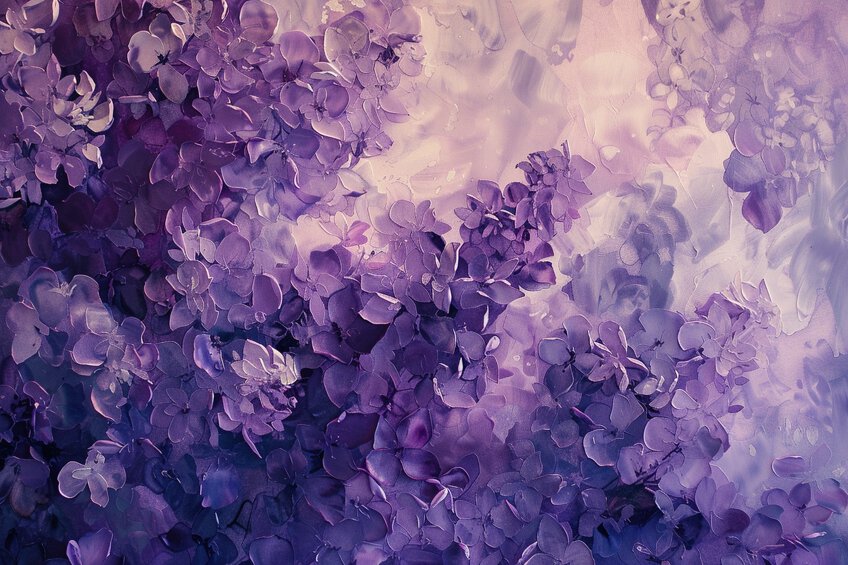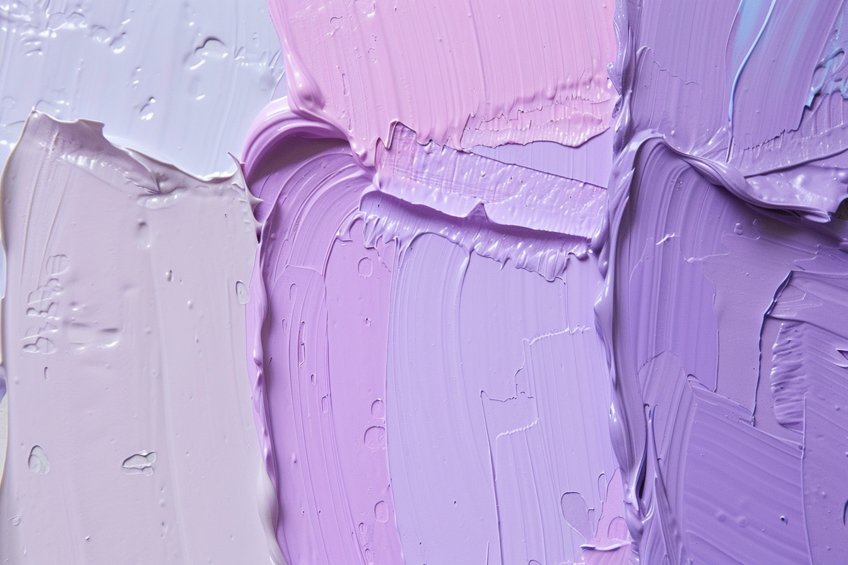Meaning of the Color Lilac – Deciphering Its Symbolism
Lilac, the whimsical hue that dances between lavender and pink, carries a secret language of its own. Like a gentle whisper from a spring breeze, lilac embodies a delicate balance of serenity and playfulness. In the vast palette of colors, lilac stands out as a symbol of tranquility, femininity, and the enchanting beauty of nature’s most tender moments. Join us on a journey into the captivating world of lilac, where every shade tells a story waiting to be discovered!
Table of Contents
Key Takeaways
- Lilac is associated with emotions such as innocence, first love, and tranquility.
- This color has a role in color psychology, symbolizing creativity and romance.
- The use of lilac in design conveys a sense of calmness and nostalgia.

Historical Context and Mythology
| Shade | Hex Code | CMYK Color Code (%) | RGB Color Code | Color |
| Lilac | #C8A2C8 | 22, 45, 0, 20 | 200, 162, 200 |
Lilac, with its subdued yet warm hue, conjures a range of emotions and associations. A lighter shade of violet, lilac bears the namesake of the flower from which it is derived. Due to its historical and cultural significance, this pale yet inviting shade of purple has often been linked with sentiments of love, springtime, and youth. Its gentle appearance is sometimes seen as a representation of innocence, which contributes to its popular use in design, where it evokes a sense of tranquility and nostalgia.
Color psychology also plays a part in our perception of lilac. The color is viewed as a symbol of the first stirrings of love, due to its connection to the lilac flower, which blooms early in the season.
This association with budding romance underpins the emotive power of lilac, impacting its use in various cultural artifacts and events. Additionally, when it comes to design aesthetics, lilac is often utilized to suggest creativity and originality, echoing the innovative spirits of creative icons who have favored shades of purple in their work.
Lilac in Art and Literature
In historical context, the lilac flower and its colors have been prevalent motifs in art and literature. Artists have employed the soft hues of lilac to convey sentimentality and nostalgia. In literature, poets like Walt Whitman and Amy Lowell celebrated the lilac in their works, imbuing it with meanings of love, loss, and remembrance. For example, Whitman’s “When Lilacs Last in the Dooryard Bloom’d” is a poignant response to the death of Abraham Lincoln, where the lilac becomes a symbol of mourning and respect.

Modern Associations and Usage
In modern times, lilac shades continue to be rich with symbolism. It’s become associated with youth, innocence, and new beginnings—often used in designs and decor to evoke a sense of spring and renewal. In psycho-spiritual contexts, lilac is connected to feelings of serenity and spiritual awakening, reflecting an inner sense of peace.
Additionally, various contemporary subcultures and movements adopt lilac to signal specific ideologies or aesthetic preferences, exemplifying how color symbolism evolves with society.
The Meaning of the Color Lilac
The color lilac is often associated with the early emotions of spring as it represents youthful innocence and the budding of new love. While its parent color, purple, signifies royalty and luxury, lilac offers a more innocent, less intimidating presence.

Positive Associations
- Nature: Lilac is named after the lilac flower, symbolizing early spring, renewal, and natural beauty.
- Romance: This color is connected to the softness of first love, evoking tender and warm emotions.
- Creativity: It inspires creativity with its gentle and inviting hue.
- Helpfulness: Some believe lilac embodies an accommodating and helpful spirit.
Negative Associations
- Fragility: Lilac can sometimes represent sensitivity to a fault, bordering on feeling delicate or fragile.
- Immaturity: Due to its correlation with youth, it may be perceived as immature when applied in specific contexts.

Color Psychology and Interpersonal Connections
In the realm of color psychology, lilac plays a notable role in shaping interpersonal connections through its association with specific personality traits and its ability to influence mood and convey a sense of peace.
Personality Traits Associated With Lilac
Individuals who are drawn to lilac may exhibit certain personality characteristics. These traits often include:
- Friendliness: A tendency to be affable and sociable.
- Open-mindedness: A willingness to consider different ideas and viewpoints.
- Emotional expression: A capacity to convey feelings openly, often contributing to improved communication and understanding in relationships.

Emotional Resonance and Mood
The color lilac is believed to have a calming effect on emotions, encouraging tranquility and serenity. Its influence on mood is reflected through:
- Reduced aggression: The presence of lilac in an environment may help lower feelings of anger and hostility.
- Enhanced calmness: Lilac is tied to a sense of calmness, promoting relaxation and potentially easing stress.
- Compassion: This color is associated with compassionate emotions, which can foster stronger and more empathetic interpersonal connections.
Spirituality and Inner Peace
Lilac’s significance in spirituality is profound, as it is a color often linked to inner peace. It carries the following spiritual connotations:
- Spiritual growth: A connection to the journey of personal transformation and development.
- Sense of peace: The association of lilac with peace may provide comfort and a feeling of being grounded during spiritual practices.

The color lilac’s soothing properties and its relation to positive emotional states reinforce its importance in color psychology and its impact on interpersonal connections through emotional resonance, embodiment of desirable personality traits, and the facilitation of a peaceful state of mind.
Lilac in Design and Aesthetics
Lilac, with its soft hue and understated elegance, serves as a versatile color in design. It is frequently used to evoke feelings of creativity, sophistication, and a touch of femininity.

Fashion and Style
In the world of fashion, lilac is a color that brings a fresh and feminine vibe to clothing and accessories. Designers often incorporate lilac into their collections to add a subtle hint of color that suggests both creativity and sophistication. It’s not uncommon to see lilac featured in both seasonal trends and timeless pieces, where it varies from pale to deeper shades, demonstrating its adaptability to different tastes and styles. Lilac’s hex code is #C8A2C8, with RGB values of (200, 162, 200) and CMYK values of (0, 19, 0, 22).
This information is particularly valuable for designers seeking to create a specific aesthetic within an exact color palette.
Interior Design and Decor
Lilac plays a significant role in interior design, often associated with elegance and a sense of peace. It can serve as a sophisticated backdrop or as a striking accent in home decor. In interior spaces, different shades of lilac are used for various effects:
- Pale lilac: Instills a sense of tranquility, ideal for bedrooms and bathrooms.
- Richer shades: Convey wealth and value, suitable for living areas or as focal points.
Interior designers value lilac for its ability to harmonize with various color palettes, both warm and cool. It is especially effective in bringing a unique and unconventional touch to a space while maintaining a certain level of traditional beauty.

Lilac in Branding and Marketing
Branding specialists see lilac as a color that can convey a brand’s creativity and uniqueness. It is chosen for its psychological impact, which can suggest sophistication and wealth without being overwhelming. The use of lilac in branding and marketing materials can appeal to audiences looking for something fresh yet enduring. A brand might use the color lilac to stand out amongst competitors, especially within industries that value beauty and creativity.
Lilac is also often seen in the branding of products that are marketed as being luxurious or of high value, using this color to evoke the desired feelings from consumers.
The Horticultural and Aromatic Appeal of Lilac
Lilacs are a popular choice among garden enthusiasts due to their aesthetically pleasing blooms and delightful fragrance. These flowers herald the onset of spring, symbolizing growth and renewal with their lush, verdant foliage and eye-catching blossoms. The cultivation of lilacs in a garden setting adds both visual and aromatic charm, as their presence can create a calming and soothing atmosphere. When it comes to flora, lilacs demonstrate resilience and adaptability, thriving in well-drained soil with ample sunlight. Gardeners often utilize these flowers to add a splash of color to their landscapes:
- Flower arrangement: Lilacs can range from white and pale lavender to deep shades of purple, contributing diverse hues to gardens.
- Bloom season: They typically flower in springtime, though some varieties have been developed to bloom multiple times a year.

The scent of lilac is one of its most distinguishing characteristics. The aroma is described as:
- Nature-inspired: A fresh, clean fragrance that captures the essence of the outdoors.
- Floral essence: A sweet and light smell that many find uplifting.
Lilacs are not just a visual delight but also a source of olfactory pleasure, intensifying the experience of nature’s beauty. Moreover, their scent is often associated with various new beginnings, as they mark the transition from the dormancy of winter to the vibrancy of spring.
The aromatic compounds produce a distinctive bouquet that can inspire a sense of peace and tranquility, making lilacs a favorite among plant lovers and aromatherapists alike.
The Symbolism of Lilac
Lilac, a hue with historical and cultural depth, evokes an array of emotions and carries significant symbolism across different contexts.

Emotional Associations
- Nature: Lilac is closely tied to the natural world, often signifying the beginning of spring and renewal.
- Art: In art, lilac can impart a sense of nostalgia or convey a calming, feminist presence, reflecting the delicate balance of its gentle appearance and the strength it symbolizes.
- Mourning: Historically, lilac also has connections to mourning, particularly in the 18th century, offering a softer counterpart to the darker hues traditionally associated with loss.
Cultural Significance
- Regal: Lilac has a regal significance, embodying elegance and nobility, often used to symbolize the dignity and pride of historical figures in England.
- History: Looking to the 18th century, the use of lilac in both fashion and art surfaced as a symbol of both high society and the burgeoning sentimentalist movement.
- Spring: In current contexts, lilac often encapsulates the essence of spring, representing youthful innocence, new beginnings, and the blooming of nature.

Delving into the meaning of lilac is akin to unraveling a charming mystery, where each shade reveals a different facet of its captivating personality. Whether it’s the soothing pastel lilac evoking calmness or the vibrant lilac bursting with energy, this color never fails to enchant and inspire. So, next time you encounter lilac, remember its tale of serenity, femininity, and the magic of embracing life’s most delightful hues. Let your world bloom with the beauty of lilac, adding a touch of whimsy and wonder to every moment!
Frequently Asked Questions
What Does the Color Lilac Symbolize in Various Cultures?
In various cultures, the color lilac is often associated with innocence, youthfulness, and the first emotions of love. It is derived from the lilac flower, which has connections to nature and springtime. Some cultures see lilac as a representation of spirituality and enlightenment, as it shares some properties with the color purple, historically linked to royalty and wisdom.
How Is the Color Lilac Perceived in Psychology?
Psychologically, lilac is perceived as soothing and calming, promoting emotional expression and reducing aggression. It’s thought to encourage friendship and open-mindedness. The color is sometimes associated with immaturity and extroversion, suggesting a sociable personality that lives in the moment.
What Are the Differences Between the Colors Lilac and Lavender?
The color lilac is a pale violet tone with a slightly pinkish hue, while lavender is a similar pale purple but with a bluer, more greyish undertone. While both colors derive from the purple family, lilac tends to evoke warmth due to its pinkish tinge, whereas lavender is often considered cooler because of its blueish influence.
Isabella studied at the University of Cape Town in South Africa and graduated with a Bachelor of Arts majoring in English Literature & Language and Psychology. Throughout her undergraduate years, she took Art History as an additional subject and absolutely loved it. Building on from her art history knowledge that began in high school, art has always been a particular area of fascination for her. From learning about artworks previously unknown to her, or sharpening her existing understanding of specific works, the ability to continue learning within this interesting sphere excites her greatly.
Her focal points of interest in art history encompass profiling specific artists and art movements, as it is these areas where she is able to really dig deep into the rich narrative of the art world. Additionally, she particularly enjoys exploring the different artistic styles of the 20th century, as well as the important impact that female artists have had on the development of art history.
Learn more about Isabella Meyer and the Art in Context Team.
Cite this Article
Isabella, Meyer, “Meaning of the Color Lilac – Deciphering Its Symbolism.” Art in Context. April 9, 2024. URL: https://artincontext.org/meaning-of-the-color-lilac/
Meyer, I. (2024, 9 April). Meaning of the Color Lilac – Deciphering Its Symbolism. Art in Context. https://artincontext.org/meaning-of-the-color-lilac/
Meyer, Isabella. “Meaning of the Color Lilac – Deciphering Its Symbolism.” Art in Context, April 9, 2024. https://artincontext.org/meaning-of-the-color-lilac/.









